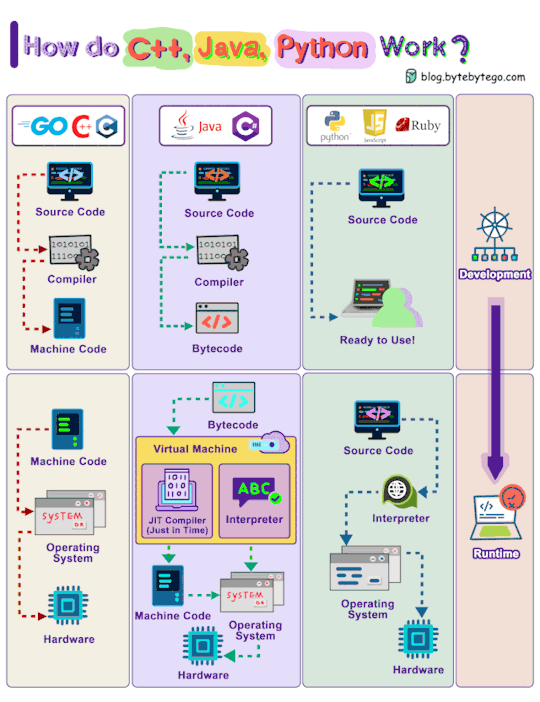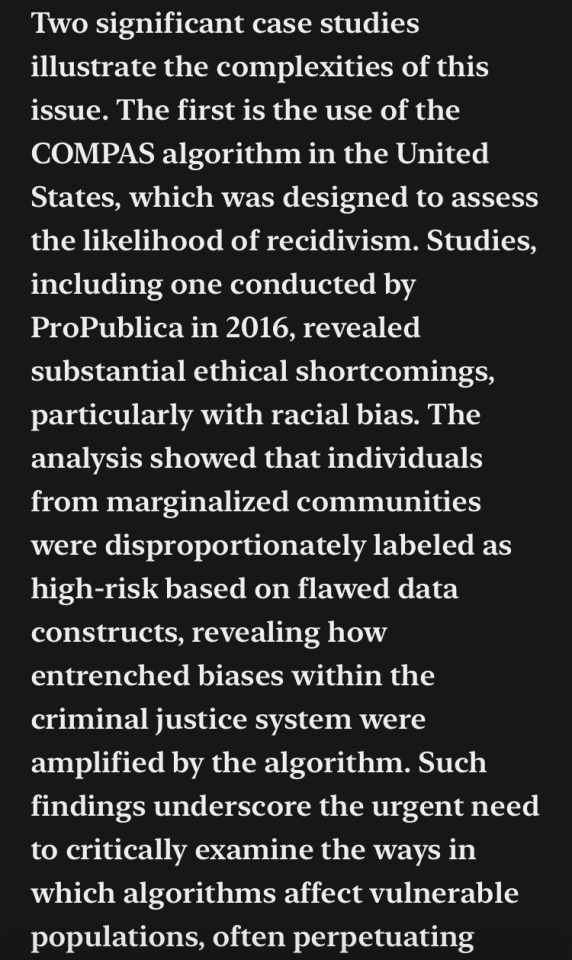#computational philosophy
Explore tagged Tumblr posts
Text
Ética como arquitectura: el papel del filósofo en la era de la inteligencia artificial
Durante demasiado tiempo se ha asignado a la filosofía un rol de crítica tardía: un juicio ético que llega después del diseño, después del despliegue, después del impacto. Pero en la era de la inteligencia artificial —donde las decisiones ya no son solo humanas, sino algorítmicas— este rol es insuficiente. Ya no basta con preguntarse “¿fue ético lo que hicimos?”; debemos participar en el diseño de lo que puede hacerse.
En lugar de una ética como muro de contención, necesitamos una ética como arquitectura. El filósofo no como censor, sino como ingeniero conceptual: alguien que diseña marcos de inferencia, jerarquías de causalidad, estructuras de sentido. En sistemas complejos como la IA, donde las salidas dependen de modelos opacos y datos ambiguos, el filósofo puede contribuir con aquello que ninguna red neuronal genera por sí sola: criterios de inteligibilidad, niveles de explicación, nociones de justificación.
No se trata de humanizar la máquina a posteriori, sino de tejer humanidad en la estructura misma del sistema. La respuesta a cómo mejorar la Inteligencia Artificial a veces no está en más datos ni más capas, sino en estructurar mejor la inferencia. Una IA explicable no es solo un logro técnico, sino una propuesta filosófica encarnada: hacer que el sistema no solo funcione, sino que tenga razones.
Quizá ha llegado el momento de dejar de hablar de “ética de la IA” y empezar a hablar de ontología operativa: qué estructuras de mundo estamos codificando cuando construimos sistemas que deciden. Y preguntarnos no solo si podemos hacerlos, sino qué clase de mundo hace posible esa decisión técnica.
#filosofía#ética aplicada#ontología#inteligencia artificial#ética del diseño#filosofía de la tecnología#explicabilidad algorítmica#filosofía contemporánea#AI ethics#computational philosophy#filósofo en la práctica#diseño responsable#tecnología y sociedad
0 notes
Text
What I really appreciate about The Talos Principle 2 is that big chunks of its writing genuinely read like they were written by someone who's personally had to justify the discipline of philosophy to a STEM major. "There exists an implicit moral algorithm in the structure of the cosmos, but actually solving that algorithm to determine the correct course of action in any given circumstance a priori would require more computational power than exists in the universe. Thus, as we must when faced with any computationally intractable problem, we fall back on heuristic approaches; these heuristics are called 'ethics'." is a fascinating way of framing it, but then I ask why would you explain it like that, and every possible answer is hilarious.
#gaming#video games#the talos principle 2#the talos principle#philosophy#ethics#computer science#stem#the talos principle 2 spoilers#the talos principle spoilers#spoilers
2K notes
·
View notes
Text
One day it will all be worth it <3

Nights like this can be so draining and tiring but posting stuff like this remotivates me to keep going. Struggling so hard to not be distracted but it will work out…
#academia#academic validation#academic weapon#history#philosophy#philanthropy#ethics#notes#study motivation#student life#studying#studyblr#studyspo#student#study blog#study aesthetic#study notes#my notes#life lessons#love#live#life#ethical lifestyle#good life#college life#kiss of life#hydration#owala#computer#trees
104 notes
·
View notes
Text
It's interesting to see how technology changes over time, including economically. One of the plot points in the 1984 novel Neuromancer involved 3MB of stolen RAM chips (this is the only thing about computers which William Gibson got right). Prior to the 1996 price crash, RAM was easily one of the most expensive parts of a computer. In 1984, a single 3MB RAM chip could have cost about USD$2600, adjusted for inflation as of 2025.
Earlier this afternoon, I placed an order on Newegg for 32GB of RAM, which is the better part of eleven thousand times that, for less than USD$60.
24 notes
·
View notes
Text

#chaotic thoughts#delulu#spilling thoughts#unhinged#craving#devotional#cosmic entity#spilled poetry#godlike#poetry#body horro tw#divine machinery#machine dreams#history#philosophy#enlightenment#technology#techcore#every time a computer is courteous or kind to you because it was programmed to be that way#i hope you think about how angels too were made to serve and worship their creator
90 notes
·
View notes
Text
Multiple people in the last two days have proposed Goblin Emperor/Murderbot crossover fic, which is a fascinating conclusion to jump to, but I would like to propose the setup to this fic:
Murderbot is contracted to a service that results in its killing a couple of humans. Its contract ends, and it is immediately contracted to guard investigator Thara Celehar and ensure that the murderer does not harm him while he investigates.
Celehar is absolutely working himself into the ground. Murderbot is 100% calling this one in. Following Celehar around providing no assistance whatsoever.
Celehar: The corpses said they did not see their attacker, but there was evidence the attacker was very fast Murderbot: Curious.
Eventually Celehar works round to uncovering the truth, which Murderbot does nothing to hide from him, because it is a tool and ultimately the people to blame are the ones who contracted it so what does it care.
Celehar: Why didn't you SAY you did it at ANY POINT in the last TWO WEEKS? Murderbot: You didn't ask. Also it gave me time to catch up on my media.
It was hired to make sure the murderer does not try to harm the investigator, and it is achieving that mission.
#the goblin emperor#murderbot#hmm do I put this in the tag? ehh I suppose for organizational purposes#fic request#the grand denouement:#Celehar: so if you're just a tool who hired you?#Murderbot: I am not contractually allowed to say#Celehar: What information are you allowed to give me? - What USEFUL information to this case I mean#Murderbot: I could tell you where the records are stored#Celehar: Where are the records stored?#Murderbot: Contract history is kept in this repository! It's public access.#and so Thara Celehar learns the fundamental philosophy of computer programming#and Murderbot pushes play on Sanctuary Moon
37 notes
·
View notes
Text
inadequate definitions of a computer game
I'm a game dev! So I make these things called computer games. But what is it that I'm making exactly?
One simple answer is that a computer game is a string of data. That is, after all, what Steam sends you when you buy a game. The data consists of instructions, art assets, text strings, metadata etc which can be 'executed' by a suitable computer to play that game. And if you copy that data without paying the right person you're a criminal doing a crime etc etc.
But is that data the game? It can't be, because you can have completely different data that is still 'the game'. A Windows build and a Linux build of a game are probably no more similar than any two random binary strings. If you know what you're looking for you could correlate them piece by piece - that string of data represents that texture, which is present in both - but only if you know, and you decompress the data the right way etc etc. But they're the same game, because they do the same thing when you run them.
So it seems a computer game is defined by what it does rather than how it's represented on the computer. This isn't a unique property of computer games - consider how many ways you can encode a movie for example.
But which of the things it does define a given game? Computer games have a remarkable number of pieces to them, and as you soon find out when you're making one, they can all be swapped out pretty freely.
For example, a game's music is often a pretty integral part of 'the experience'. But you can easily mod a game to have different music. We don't usually consider such a modded game to be a different game entirely. Well, it's a matter of degree, it's not absolute... swap out a game's music and it's still the same game. Replace all the models, levels, etc etc as in a 'total conversion' mod and it is a 'new game'. Where we draw the line is ultimately arbitrary...
But this is pretty remarkable, I think. Most artworks in the Age of Mechanical Reproduction(TM) have a pretty fixed form. A movie is a sequence of images and sounds arranged in time, a novel is a specific string of characters. Computer games, though, are flexible things.
A computer game is assembled from lots of little elements. Each of them on their own might be more or less specific, but it's how they're put in relation to each other that gives a game its identity. You glue together these elements in the mind of the audience: play the song City Ruins (Rays of Light) and if you've played the game, it will likely conjure the image of 2B's dress, the feeling dodging the machine lifeforms, the story about the androids and their existential tragedy, all unified in this thing we call "NieR Automata". In another universe, we could imagine that some other elements were tied together in this way - another game that happened to compose the 'same song' with a different aesthetic or mechanics. But the game is beloved because all these things are considered consonant.
Computer games share this in common with film, comics, etc etc. - they're all combinations of other art forms. But computer games have this extra thing that's more or less unique to the medium, the element of direct interaction with some kind of mutable 'state' inside the computer.
At a lower level of abstraction, when you interact with a computer game, data is sent from a controller (keyboard etc) to be read by the game, which modifies some stored state in computer memory; another part of the program 'reads' that state and displays pixels on the screen. Which means there is this separation between the presentational aspect and the 'mechanics'. You look the screen and see a human running but I, the game developer, can 'know' that what's 'really' going on is that a capsule collider is moving across a plane, and we change the position and rotation value based on your input. Then, to 'draw it', another variable holds animation state, and we're sampling the animation data, and doing some IK, and deforming vertices on the GPU, and pumping it through a fragment shader and so on... but all of that graphics stuff could be swapped out and the game would still 'play the same' in the sense that the same inputs would change the game state in the same way with the 'same outcome'. There are even some games, like NetHack and Dwarf Fortress, which support many different 'frontends' which look quite different.
But which is more 'real'? We can't see the game state. We might say that given this game state we update this enum to the value we consider to mean a player has won (let's say... 0b00000010), but the only way that the player knows they've won it is if we display a corresponding message on the screen. That's the only reason we care, as well. The presentation is absolutely integral. All that internal state is just there to make sure that 'you won' and whatever other information is displayed on the screen at the right time to maintain the illusion that 'there is a game' which we're working so hard to convey.
And the state of the program is not exactly what we're trying to convey. The player is not imagining floating point values changing, let alone cpu instructions changing a binary field, or voltages in silicon; they're imagining an object in a location. 'A character jumping.' We are trying to make sure that fantasy is believable. Every layer has to work together to make this happen. Ultimately what we're creating is a rectangle of flickering lights but if we do our job well enough, and it's approached with a willingness to suspend disbelief, it will come across as something like a place inhabited by something like people...
So a game isn't any particular element of its aesthetic presentation, and it isn't the way its data changes in response to interaction. It's some kind of gestalt created from the two, only when a human interacts with the whole system, which allows them to conjure a fantasy in large part designed by another human - and have this external thing reinforce it and make it feel concrete. That's what it's my job to create. What a marvellously abstract entity...
75 notes
·
View notes
Text
i might be trippin or something and i cannot sufficiently explain why but linguistics, maths, computer science and philosophy are all the same thing
10 notes
·
View notes
Text
Everything is public now, potentially: one’s thoughts, one’s photos, one’s movements, one’s purchases. There is no privacy and apparently little desire for it in a world devoted to non-stop use of social media. Every minute, every second, has to be spent with one’s device clutched in one’s hand. Those trapped in this virtual world are never alone, never able to concentrate and appreciate in their own way, silently. They have given up, to a great extent, the amenities and achievements of civilization: solitude and leisure, the sanction to be oneself, truly absorbed, whether in contemplating a work of art, a scientific theory, a sunset, or the face of one’s beloved.
— The Machine Stops (Oliver Sacks)
#oliver sacks#technology#digital technology#computing#internet#social#privacy#sociology#psychology#philosophy#solitude#leisure#art
256 notes
·
View notes
Text
That's a nice solution you've got there. It would be a shame if it wasn't the root cause of the problem.
34 notes
·
View notes
Text
"How does code work?"
The quote above “how does code work?” came from one of my new Computer Science students in my introductory Computer Science 20S course. I have certainly encountered this type of question before, but this time it made me stop and think. When I thought about my answer, I thought “how deep” should my answer be? At one level I could just respond with “by telling the computer do the stuff you tell it…

View On WordPress
80 notes
·
View notes
Text

Editing my Character
Art by Øyvind Engevik
#futurism#science fiction#transhumanism#cyberpunk#simulation#player character#technology#cyborg#art#artificial intelligence#sci fi#philosophy#singularity#quantum computing
11 notes
·
View notes
Text

- Sunday, Jan 12, 2025 -
On god, this semester is my academic comeback. manifesting good study habits and strong self-discipline.
I got my cumulative due dates spreadsheet all set up before classes officially start in the morning, and I got my new desk all decorated and tidy so I feel motivated to study. I'm feelin really optimistic!!
Courses I'm taking this semester:
Elements of Astrophysics (finally!!!)
Analytical Mechanics
Methods of Experimental Physics
Object-oriented programming
Philosophy of Science
#college#study blog#academic comeback#studyblr#studying#stem students#uni#college student#astrophysics#study with me#philosophy#science#computer science#new semester#spring semester#study motivation#study space#astrophysics major#astronomy#goodbye free time#its been real
19 notes
·
View notes
Text
(Sorry that there’s no See Results option this time, after factoring in everyone’s suggestions to improve the poll, there just wasn’t room for a See Results)
#polls#tumblr polls#daily poll#niche polls#poll blog#daily polls#niche#weekly polls#poll time#random polls#history#books#essays#memoir#I’m too tired to add all the tags I’m not on computer so I can’t copy/paste them from the original poll and#this is the third time I’m posting this poll#bc when I posted the improved-options blog I accidentally left out the No option#yall I keep messing this one up thank you for your patience i think this one’s done right#aside from having the proper tags i suppose#anyways#academia#English#poetry#philosophy#classics#music#university#writers#academia poll#college poll
10 notes
·
View notes
Text






Read More Here: Substack
#algorithmic determinism#techcore#philosophy#quote#quotes#ethics#technology#sociology#writers on tumblr#artificial intelligence#duty of care#discrimination#implicit bias#law enforcement#psychologically#computational design#programming#impact
14 notes
·
View notes
Text

In some respects, one can think of a quantum computer today as being analogous to an analog computer from years ago. The cooling is key to reduce energy and thus vibration in the system. If a quantum computer is run for too long the processor heats up and the noise in the results increases. So sensitive is the computer to heat or vibration that at the $150 million Nanoscience Hub at Sydney University, scientists have to use stairs rather than the lifts because the quantum computer would feel the vibration of the lifts in the building and produce meaningless results. Thus in Devs, the quantum computer main lab space is depicted as a suspended hovering isolated block, inside a bunker style building. This art directed visual feature, like so many in Devs, had one foot in reality and another in fiction.
#devs#devs 2020#alex garland#quantum physics#quantum computing#quantum mechanics#science fiction#Sonoya Mizuno#Nick Offerman#Jin Ha#Zach Grenier#Cailee Spaeny#Stephen McKinley Henderson#Karl Glusman#Alison Pill#software engineering#free will#determinism#quantum computer#dneg#amaya#tech company#faraday cage#many worlds#De Broglie–Bohm theory#science#physics#Socratic method#philosophy#special effects
9 notes
·
View notes